Sidetracks and Detours present PASS IT ON 50 weekend supplement Sunday 28 4 2024
Sidetracks and Detours
present
PASS IT ON 50
Weekend supplement Sunday 28 4 2024
Hello and thanks for joining us on our weekly walkabout as we go searching for any arts-related items we may have missed as we searched the sidetracks and detours of our (he)artland last week. You might remember that last week we posted a memory of The Beatles taking all the top five places on the Billboard singles Hot 100 chart, and then looked at why musicians today remain dead grateful to Grateful Dead. We also dropped in at The Old Oak to discuss literature and films with Ken Loach, and then with Only God Above Us, we discovered why, according to Vampire Weekend, people make such a fuss about what is called an Oxford Comma. On the way back to Lanzarote we bought a novel that shares its name with that group and, you´ve guessed it, we´re gonna need a bigger bookshelf ! We took the day off yesterday to see whether we might get a clue as to who will win the English Premier League, Arsenal, Liverpool, or Manchester City. And now, here we are back at our desks posting out another bumper bundle of arts news. Today we deliver news, interviews, previews and reviews of poetry from The Rabbit Hole and we have featured recent live music from Rochdale Phoenix Operatic Society and of forthcoming events at The Stoller Hall in Manchester. We carry, too, a plate of Hot Biscuits, Jazz on Air, courtesy of our resident jazz journalist and broadcaster, Steve Bewick. Peter Pearson offers us another ¨Reader´s Perspective¨and finally Norman Warwick delivers his Island Insights, explaining how the vines grow on the volcanos before finally explaining what is Boreal.
We will return to our Monday to Friday daily blogs on Monday 29th April, and you can have a sneak preview of what we will be delivering in our What´s Next teaser at the foot of this issue.
Please enjoy your read and feel free to PASS IT ON to your like-minded, arts loving friends. I´m sure they would appreciate you doing so… and so would we ! Thanks

CONTENTS

A Place For Poetry
THE RABBIT HOLE, RAMSBOTTOM
preview by The Poet In The Rain
Researching History
Ted Edwards´ Peterloo
partial review by Michael Higgins
Live Music
ROCHDALE PHOENIX OPERATIC SOCIETY (RPOS)
Iolanthe: review by Graham Marshall
Live Music
FORTHCOMING EVENTS at Stoller Hall
previews by Newsletter

Live Jazz
FORTHCOMING EVENTS AT THE CROOKED BILLET
previewed by Jazz In Reading
Jazz On Air
HOT BISCUITS
presented by Steve Bewick
A Reader´s Perspective: All Points Forward
JIM ROONEY player and producer
by Peter Pearson
Island Insights from Norman Warwick
LAVA, PICON & MINERALITY PRODUCE WINE
WHAT IS BOREAL?


A Place For Poetry
THE RABBIT HOLE, RAMSBOTTOM
preview by The Poet In The Rain

The best of the regions comic poetry with Steven P. Taylor, Lynn Walton and Gordon Zola plus music from star of ‘The Voice’ Linda Jennings
Event Details Doors Open at 7:00PM
Location
The Rabbit Hole Ramsbottom, United Kingdom, BL0 9AY

I saw several live performances from Gordon Zola when I lived in the UK but I´m not sure this venue was delivering poetry readings or slams of any kind. What I do know, however, is that Gordon Zola is a consummate performer, comedic and often profound.
I can recommend Ramsbottom, to, as a perfect and busy village nestling in the hills around Bury.


Researching History: with Michael Higgins
ALL’S FAIR IN LOVE, FOLK SONG AND WAR
partial review of Ted Edward’s Peterloo
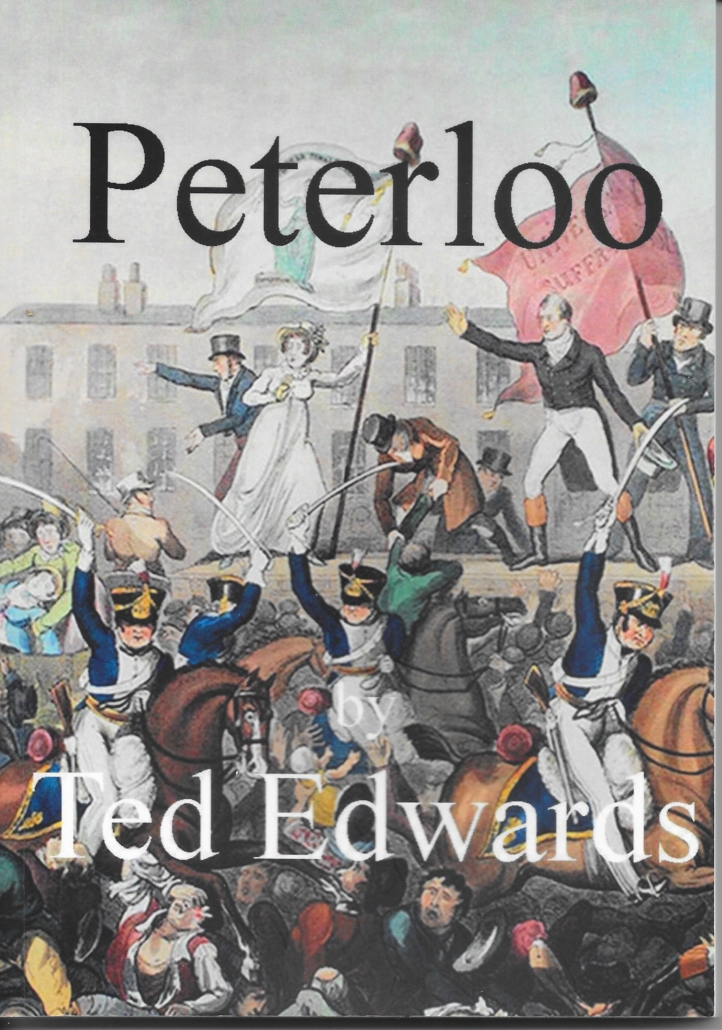
Beware the folk singer with his finger in his ear setting out to right the world early one morning in May (or at least in April). And beware the political folk singer no longer spreading the rural idyll of reaping, courting and going off to the cruel wars, but spreading the grime of the urban rat race, class struggle and the woes of the sons of toil. And beware (with a smile) the folk singer turned author.
I have just read Ted Edwards’ novel ‘Peterloo’, (left) first published in 2005 in which the author, folk singer-songwriter, raconteur, Sahara and Icelandic explorer, and much more, who died last year, retells the story of Manchester’s ‘Peterloo Massacre’ of 1819. Ted (1939-2023) was a Wigan, Lancashire, area folk singer and societal warrior of some fame – not only as the composer of ‘Coal Hole Cavalry’ and other industrial themed songs – but as a bewildering eccentric turning up a week early for folk festivals by mistake and forgetting picked up hitchhikers loitering in his rear seat and having been taken in the wrong direction. Once he was featured in a TV documentary crossing the Sahara and being rescued by locals when a camel crushed his water canteen. Many other singers have covered his songs, from Ewan MacColl to the Houghton Weavers.
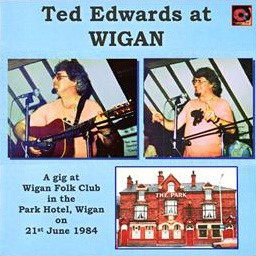
Eccentric singer –songwriter he may have been, but novelist as well? The idea of folk writing is not new but perhaps writing fiction is. I first heard of Ted’s book at a folk singing and poetry session in Blackburn recently where Ted’s good friend and fellow singer Ged Tod announced that he had re-published the book and was selling copies for charity – or at least costs. I started reading it on the train back to Rochdale. Of course, there were others at the gathering who had also written or edited books – Nick Dow’s A Secret Stream on English Gypsy folk songs is one I have reviewed in Sidetracks and Detours. And others performing there on that day have written on other folk music or dialect topics. But none to my recollection has tried historical fiction.
But as one singer once said to me ‘Folk songs encompass all English, or at least British, history in a memorable way in some form or other’ In this he is right in his own way but as political emphasis shifts from the rural to the cramped urban industrial world, protest songs vie with the rather humble and forelock tugging songs of the innocent peasantry now allocated to Cecil Sharp’s early work in the genre. And by general consensus folk singers are often described as ’ bearded lefties’ with a message, rather than the Doric Mode, sentimental plain-chanters of old.
The sessions I often attend are case in point. Many of Ted’s songs, such as ‘Coal Hole Cavalry’ depicting childhood memories of clog- wearing miners going to and fro from the pit with their rapping wooden soles resembling horse hooves on the cobbles, recall a mill or mining town childhood. Poverty and hardship linger in Ted’s song ‘Weepin’ and Wailin’ away, and in other songs the poor urban life is re-lived among the now relatively well- off modern folk singer. But this is not the only theme of course as many singers still sing the old-world lyrical ballads of love and tragedy dating from the days of Mr/Mrs Anonymous and the mysterious ‘Folk’ and their ancient music. Many modern singers find old poems and songs and set them to music, sometimes of their own composition, and indeed I sang at the session a 14th century song from the Harley Lyrics, Blow Northern Wind, to which I had set a tune. It may have been originally a Carol Dance where the dance leader sings the verses while the ring dancers sing the chorus. But I sang it as a solo man’s longing for the ‘bird so sweet in bower’ with the refrain ‘Blow Northern Wind, blow thou me my sweeting’.

However, love soon turned to lust that day as a clutch of rather bawdy and risqué traditional folk songs sprang out of nowhere as various singers vied to sail close to the erotic wind. Then just as abruptly someone sang a 1960s song written by Stan Kelly, (left) the author of ‘Liverpool Lullaby’ covered by Cilla Black in the 1960s – all about Liverpool FC football club and messing with an Everton supporting lass. Someone else sang a 19th century dialect poem set to ‘a tune he had nicked ‘from elsewhere. I too sang a song about the Blackburn venue we were in called Wilpshire Rising Sun, by Robin Parker, and set by him to the tune House of the Rising Sun. The mood and music swung back to the ultra modern and recently written to the old, the traditional and the plainsong of centuries ago. It was all very eccentric and spontaneous.

And such is Ted Edwards´ book, setting a disparate set of characters together in a detached skirmish infantry group at the end of the Battle of Waterloo. After a chance chat with the Duke of Wellington, presumably on his ride back from the battlefield to write his famous Dispatch, they meet later back in Manchester after demobilisation, get involved in the radical democratic reformist movement and mix their families and lives in the campaign to abolish the Corn Laws and bring in universal manhood suffrage. As such they become involved in the abortive Blanketeers’ March from Manchester to London to petition parliament, a mythical strike of several weeks, starvation and death due to the resulting destitution, and a final reckoning on St Peter’s field, Manchester, in August 1819. As you may guess, it is not an overly cheerful book but it does have hope. It also points out that the Lord Sidmouths (right) of this world, the anti- reformist Home Secretary of the day, are still stalking the land.
Historians, however, might query Ted’s interpretation of economic and social misery in the primitive cotton mills and crowded streets of the day. And no doubt Hugh Birley, captain in the Manchester and Salford Yeomanry, blamed in the book for the ensuing mayhem, might wish to sue for slander at some of the allegations made against him if his ghost could return. But local folk might on the other hand appreciate Ted’s use of real historical characters and local dialect. Ted could be forgiven for making a major character, John Lees of Oldham, an infantryman instead of the Royal Horse Artillery ammunition wagon driver that he really was, if he had explained how he got from the artillery park to the lost infantrymen.
Plot harmony, and characterisation, are limited. But, as in the best folk singing sessions, there are many loose ends and even beginnings. I have sung songs of Waterloo in which not only General Hill, who survived uninjured, but also the Duke of Brunswick, killed in an earlier battle, were both avowedly killed at Waterloo in heroic circumstances. But in Ted’s book anyone might grumble when Ted purposes that Lord Sidmouth, the Home Secretary in 1819, was in fact the Prime Minister! The real prime minister in 1819 was Lord Liverpool, who does not get a mention. This is odd as in other parts of the book he is very particular on detail – for example the number of infantry companies and cavalry squadrons on duty for Peterloo. And his fictional protagonists Bob, and bride Sarah, are crucial in holding the book together as she uplifts his spirit on the field of battle and in the political campaigning leading to the Peterloo Massacre.
On that eccentric note I will close this odd look at history through song and novel by those coloured by a love for it and a particular calling. There is so much of history to sing and celebrate, and of course lament. And of course, if you wish an eccentric semi-fictional account of Peterloo and the ‘poor always with us’ theme, then this is the book for you. In Love, War and Folk Song all is fair.
Thanks for this really interesting piece, Michael. I knew Ted only very vaguely, only meeting him on the folk scene on a couple of occasions. The first time was on a Monday evening when he was our guest artist at folk club at The Kings in Heywood when Colin Lever and i were the resident duo as Lendanear. He seemed a nice enough guy and his set was amazing, and until then I had only heard Coal Öle Cavalry which was why he had booked him. The following week he turned up again, quite early when Colin and I were setting up. I was pleased to see him, but then he asked me if I was the organiser or resident act. When I replierd botyh he said, good, that´s great because I´m your main act tonight. It turned out this date was a mic upo, of course, but even as he drove over to us, parked up and came into the pub he hadn´t realised he had played here only the week before. As it happrned he checked up and found it he was supposed to be playing in MIlnrow, and was relieved he still had time to get there.


Live Music
ROCHDALE PHOENIX OPERATIC SOCIETY (RPOS)
Iolanthe: review by Graham Marshall .

I had a really enjoyable evening yesterday at the performance of Iolanthe by the Rochdale Phoenix Operatic Society in St. Aidan’s, Sudden, church hall. I would like to congratulate the Society on its successful adaptations to the venue.
The production was great, and the odd, up-to-date references delightfully appropriate.
The singers were very good, though not always as audible as an oldie like me would have liked! The small orchestra was very good indeed. I particularly appreciated the way the few upper strings were able to balance with the rest of the ensemble.
The atmosphere was extremely enthusiastic and appreciative.
All in all a splendid occasion.
Thank you Phoenix Operatic Society!

The Chairman of RPOS reminds us that Iolanthe is also known as The Peer and The Peri, by W.S Gilbert & Arthur Sullivan.
He tells us that the 2024 production of W.S Gilbert & Arthur Sullivan’s ‘Iolanthe’ was a smashing sell-out success. RPOS were honoured to be supported by many of the ensemble´s friends from various other societies all over the country and were thrilled to have spectacular audiences in every night. You can view our Iolanthe Gallery in the ‘Past Shows’ page, or check out our Facebook.
The Chairman, Steven Miller, and all those who are part of our Rochdale Phoenix Opera Society family would like to extend our thanks to everyone who attended and supported our show… without you, this would all be impossible!

Live Music
FORTHCOMING EVENTS at Stoller Hall
previews by Newsletter
There are chamber music concerts coming soon to The Stoller Hall in Manchester.
Across May, the venue is to welcome world-class musicians for a series of intimate classical music performances.
Stoller Hall is even making a Special Offer!
Fans can enjoy a longer evening of music on Wednesday 1st May with £5 off tickets when booking for both The Protecting Veil and Victoria String Quartet.

THE PROTECTING VEIL
01.05.24, 6.30pm Tickets: £15
Trinity Laban String Ensemble and Dancers present a staged production of John Tavener’s iconic work, featuring celebrated cello soloist Raphael Wallfisch.
To begin the concert, string players from Chetham’s School of Music will perform alongside Trinity Laban students in Philip Herbert’s affecting Elegy – in memoriam Stephen Lawrence.

VICTORIA STRING QUARTET with John Bradbury 01.05.24, 8pm Tickets: £20, FTE/U18 £5.50
‘The maximum impact to be expected of such a wealth of expertise and experience.’ – Oldham Evening Chronicle
Manchester’s own Victoria String Quartet are joined by the BBC Philharmonic’s Principal Clarinet John Bradbury. They’ll perform quintets by Brahms and Weber plus Imogen Holst’s Phantasy Quartet.

KATHRYN STOTT,
PAVEL FISCHER AND PETR PRAUSE
12.05.24, 7.30pm
Tickets £26. U18/FTE £5.50
A very special concert as Kathryn Stott joins forces with violinist Pavel Fischer and cellist Petr Prause. They’ll perform a concert programme celebrating the four giants of Czech classical music, Smetana, Martinů, Janáček and Dvořák.

THE BENYOUNES TRIO
21.05.24, 7.30pm
Tickets: £22, FTE/U18 £5.50
The Benyounes Piano Trio is a newly-formed ensemble made up of some of the UK’s most versatile and experienced chamber musicians.
They’ll be performing some of the great piano trio masterworks, including music by Ravel and Schubert.

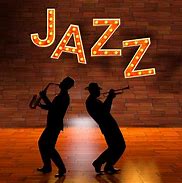
Live Jazz

Gordon Giltrap & John Etheridge
Tuesday 14 May, The Crooked Billet,
Newlands Lane, Stoke Row RG9 5PU
preview by Jazz In Reading

Guitar supremos Gordon Giltrap & John Etheridge join forces for an unforgettable evening of top class musicianship performed by two of the UK’s most respected and influential guitarists.
These innovative guitarists will be performing many of their incredible songs with inspiring arrangements in what promises to be an electrifying show. The artists will perform material from their respective careers and favourite pieces from throughout the landscape of their musical visions and influences.
This is a show guaranteed to enthral guitar aficionados, acoustic enthusiasts and music lovers in general, so don’t miss the chance to see these influential guitarists in action.
Check out web sites
The Crooked Billet or Jazz In Reading
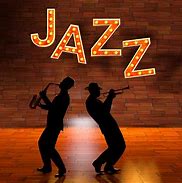
Live and Recorded Jazz

MUSIC THAT´´S GOING PLACES
previewed by Rob Adams

First, though, the Scottish National Jazz Orchestra welcomes back the brilliant pianist Makoto Ozone (left) , who joins the first meetings between the SNJO and the Royal Scottish National Orchestra, as well as starring with the SNJO in Aberdeen. The two orchestras combine in Edinburgh on Friday 3rd and Glasgow on Saturday 4th when Ozone will be the featured soloist in a new orchestration of Rhapsody in Blue to mark the centenary of George Gershwin’s jazz age classic. The SNJO’s own piano star, Peter Johnstone will also feature in these concerts. Ozone and the SNJO then play Rhapsody in Blue in Aberdeen on Sunday 5th in a programme that includes the suite from West Side Story and music by Duke Ellington, Count Basie, Chick Corea and Joe Zawinul.

Jazz at the Merchants House continues on Sunday 5th when Brodie Laird-Jarvie (right) straps on his bass guitar to lead Deceptive Lizard. As Brodie says, this is very much a collective effort and he has chosen a terrific group of musicians to help him realise his aims. Saxophonists Norman Willmore and Michael Butcher, whose contribution to Fat-Suit drummer Mark Scobbie’s solo album, Tomorrow Today, is still an early highlight of the 2020s, are joined by the immensely creative guitarist Ben Macdonald and master drummer Alyn Cosker in what promises to be an electrifying session.

Young creative talents abound in the Tommy Smith Youth Jazz Orchestra (left), who visit Strathaven on Saturday 18th and St Andrews on Sunday 19th. They’ll be playing music by jazz legends Basie, Ellington and Gillespie as well as more recent jazz greats including Jazzmeia Horn, all presented with verve, exuberance, collective attention to detail and individual skill.
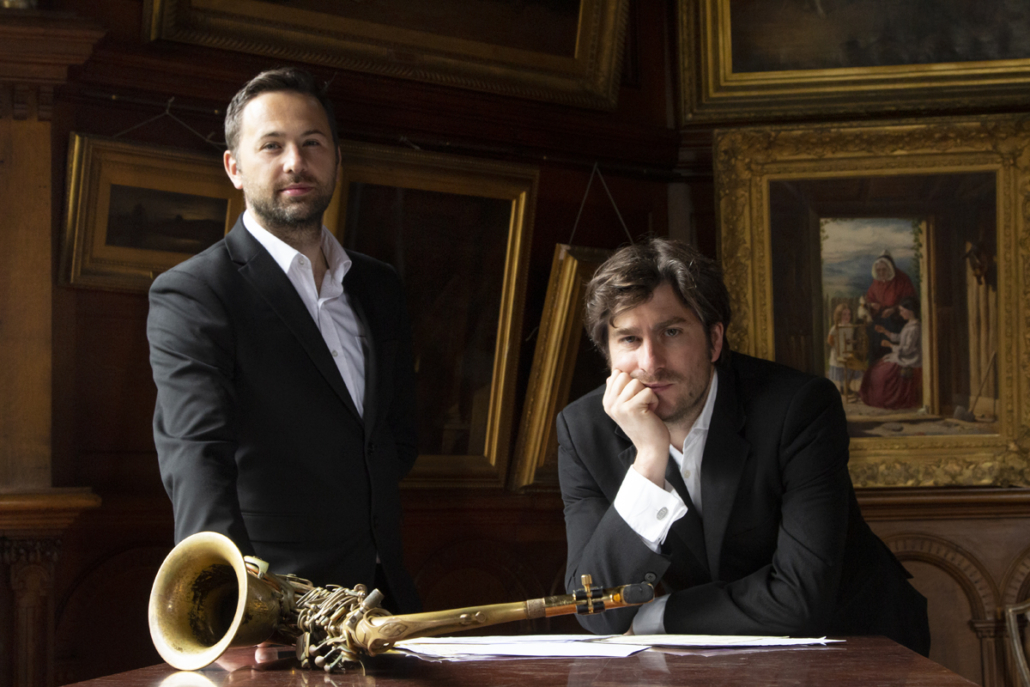
New Focus duo, pianist Euan Stevenson and saxophonist Konrad Wiszniewski (right) bring their Classical Connection to Perth Festival of the Arts on Monday 27th. Euan’s knowledge of classical composers and the traits they share with some of jazz’s key figures is imparted with pithy observations and any fears of a lecture-recital are quickly dispelled by the duo’s grooving musical delivery and brilliant jazz chops.

JAZZ IN MAY 2024
Aberdeen
Aberdeen Music Hall
Sun 5: Scottish National Jazz Orchestra with Makoto Ozone
Blue Lamp
Thu 2: Lead Sister
Sun 5: Rainer Goldbeck Qrt & Doll’s Heid
Thu 9: Noovision
Thu 16: Fergus McCreadie Trio
Thu 23: Chun-Wei Kang: New Song
Edinburgh
Outhouse
Thu 2, 16, 30: Playtime tbc
Usher Hall
Fri 3: Scottish National Jazz Orchestra with Makoto Ozone and the RSNO
Glasgow
Glasgow Royal Concert Hall
Sat 4: Scottish National Jazz Orchestra with Makoto Ozone and the RSNO
Glad Cafe
Tue 14: Tao
Merchants House
Sun 5: Deceptive Lizard
Linlithgow
St Margaret’s Hall
Sat 4: Classic Jazz Orchestra

London
606 Club
Wed 1, Thu 2: Stacey Bros
Fri 3: The Coalminers
Wed 8: David Gordon Trio
Tue 14: Jonathan Gee
Sat 18: Brandon Allen Qrt
Thu 23: Julian Costello Qrt feat Georgia Mancio
Thu 30: Sean Fyfe feat Dave O’Higgins
Fri 31: Samara
Ronnie Scott’s
Wed 1: Finn Carter Qrt
Sat 4: Snarky Puppy
Mon 13: Bacha Mdzinarashvili
Wed 15, Thu 15: Mike Stern Band
Fri 17: Julian Siegel Qrt
Sat 18: Paul Booth’s Bansangu
Mon 20, Tue 21: Bill Evans and the Vansband Allstars
Wed 22: Ed Richardson Big Band feat Kurt Elling
Wed 29: Jane Monheit
Fri 31: Jose James

Perth
St John’s Kirk
Mon 27: New Focus: The Classical Connection
St Andrews
Laidlaw Music Centre
Sun 19: Tommy Smith Youth Jazz Orchestra (2pm)
Strathaven
Strathaven Town Mill
Sat 18: Tommy Smith Youth Jazz Orchestra (2pm)
As always, this list isn’t intended to be comprehensive; other gigs are available.

Myriad Streams is saxophonist Phil Bancroft’s answer to Spotify, a calm place where listeners can get to know one artist without having 100,000 others competing for attention.

Louis Stewart was the first Irish musician to reach the top echelons of jazz, playing with Oscar Peterson, Stan Getz, Bill Evans and more. Originally formed to release Louis’ music, Livia Records has been re-activated and is reissuing Louis’ catalogue. More info Livia Records.

John Donegan has the distinction of having played with two Arts – Blakey and Farmer – as well as working with Louis Stewart. Jazzwise greeted John’s Irish Sextet’s first album, Shadows Linger, by saying “more please” and the second album, Light Streams, with “don’t miss”.


Jazz On Air
HOT BISCUITS
presented by Steve Bewick
This week our Hot Biscuits show begins Kira Linn‘s Linntett, with a piece from Illusion and finishes with John Surman with his pebble dance.
Lyndon Owen is a musician who performs, composes and is active in promoting community arts events. My colleague Gary Heywood-Everett reviews a selection of Lyndon´s music.
Also featured is music from Fergus McCreadie, with Sketches, Ethan Iverson with Killing Me Softly, Rosie Taylor with Featherweight and Sue McCreeth with her new single.
If this looks interesting then follow me at www.mixcloud.com/stevebewick/ 24/07 and please remember to PASS IT ON


A Reader´s Perspective: All Points Forward
JIM ROONEY player and producer
by Peter Pearson

Jim Rooney is a musician, songwriter, recording engineer, Grammy-winning record producer and former partner in a successful music publishing company, Forerunner Music. He is best known for his record production with Nanci Griffith, John Prine, Iris DeMent, Hal Ketchum, Tom Paxton, Tom Rush, Peter Rowan and hosts of others. As Peter Cooper has commented, ´an album produced by Jim Rooney is normally a sign of quality´. In 2009 he received a “Lifetime Achievement Award” from the Americana Music Association for his work as an engineer/producer.

In 2014 he published his autobiography “In It For The Long Run”. It was not until after I had read this book that I realised that he was far from just a record producer. It is not his first book. That was actually co-authored with Eric Von Schmidt and was written in 1979, titled Baby Let Me Follow You Down (The Illustrated Story of The Cambridge Folk Years). I can remember seeing that first edition on the reference shelves of Manchester Central Music Library for years. It is probably still there although, as a standard work on 60’s folk music, it has been revised and reprinted several times. Born in 1938 in Boston, Rooney has been involved in music since he was 16 years old. He has been a musical partner of banjoist Bill Keith for over fifty years and played an important part in the folk revival of the ‘60’s, managing the legendary Club 47 in Cambridge, Massachusetts, and then becoming a Director of, and the talent coordinator for, the Newport Folk Festival. He also worked as a tour manager and stage manager for the Newport Jazz Festival and produced the first New Orleans Jazz Festival in 1968. Learning guitar whilst still at school, he teamed up with banjo player Bill Keith in 1959 and played festivals, including opening for Joan Baez in 1961 at Dartmouth Winter Carnival, before returning to academic studies and graduating from Harvard with an M.A. in Classics in 1962. In the late 60’s and early 70’s he continued to play gigs but combined this with a career in music administration. It was meeting “Cowboy” Jack Clement in 1976 following a move to Nashville that ultimately led him into a record production career. Jack Clement was a singer songwriter who also owned The Cowboy Arms Hotel & Recording Spa, a recording studio which had become the place to go to for a diverse array of recording artists. After playing on record sessions and demos at the studio, with Jack’s help, he learned how to run the control board. Between 1981-1987 he produced albums for Nanci Griffith, John Prine, Alison Krauss and many more at Jack’s studio. His story of meeting Nanci Griffith is particularly interesting. Jim had met Richard Dobson (an artist I featured recently here on my Reader´s Perspective column), and his songwriter friends at Bishops Pub and in early ’83 Richard asked him to produce his album. The song Robin Winter-Smith was on the album and when later Dobson invited him to a barbecue at which Nanci Griffith was present, she expressed her liking of the album and that particular song. She asked Rooney to produce her next album and that was the start of a lasting musical relationship. It was also the forerunner for him producing a series of albums that we now term Americana. These include Griffith’s Grammy-winning Other Voices, Other Rooms, John Prine’s Aimless Love, Townes Van Zandt’s At My Window, Iris DeMent’s Infamous Angel, Hal Ketchum’s Past the Point of Rescue and many others.

Forerunner Music became the name of the successful music publishing company Rooney formed in partnership with others in 1986. There is more to music publishing than meets the eye, which I only realised after reading about it. The heavily over simplified version is that any publishing deal involves transferring a part of your copyright to a publisher, allowing them to license the use of the composition. In exchange, you will get a share of royalties collected by the publisher. It then gets a whole lot more complicated (particularly with the advent of streaming) but it helps explain why he was able to recruit a host of singer songwriters starting with Dave Mallett and Pat Alger into the organisation. It was sold to the giant Universal Music Corporation in 2000. Rooney was instrumental in the issue of the recent Nanci Griffith Tribute album and Box Set. Nanci left him the rights to her first three albums and also to her previously unpublished novel. He worked on the novel to get it into a form where it could be published and arranged for it to be available exclusively on Amazon. Still involved in the music business he now splits his time between Vermont and Nashville where he continues to play music in Nashville’s Station Inn with his friends known as Jim Rooney’s Irregulars. His book is a treat for Americana fans. It offers a rare insight into the recording process for some of the legendary albums in the genre.

Editor´s note: Thanks for yet another insightful article Peter. Like almost all your articles, its going to cost me money. Every article seems to recommend to me, or remind me of, something I have always wanted to own or that I thought was unavailable. Now that I have learned that the Nanci Griffith novel, spoken of as long ago as the days of Omaha Rainbow, is available on Amazon I will have to ask my wife, Dee, for a bit more pocket money

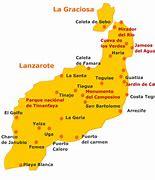
Island Insights
LAVA, PICON & MINERALITY PRODUCE WINE
By Norman Warwick
Our forty four year old son Andrew, lives in South Korea with his wife and daughter, Olivia. Andrew and Sue, are teachers at their own eponymous (Warwick Academy) extra-curricular School. You can tell Andrew is a teacher because, during our usual three hour or so weekly Skype session he loves to teach his mum and old dad some new tricks by telling them things he thinks they won´t know about the island they now consider to be home.
He taught from a text by Sofia Perez, a travel features correspondent for the BBC.
On Spain’s Lanzarote Island, Andrew quoted from her, wines that have been created from generations of ingenuity and hard work are yielded by conical hollows built into layers of volcanic ash.
Yes son, your mum and I, who have lived in retirement here for eight years, after making that our ambition over the course of a dozen annual holidays or so, have come to take this modern miracle somewhat for granted. After all we drive the twenty five km or so over the island´s major vineyard region at least twice a week. To be honest however, although they feel to us to be beautiful, dramatic and life affirming in equal measures, when viewed from a distance, the vineyards of Spain’s Lanzarote island show few signs of life to most people.
The sweeping jet-black terrain is pitted with a series of conical hollows, which shelter the vines, but it seems most people don´t see that as beauty. However, when our son told us that Sofia had described these hollows as ´looking like the thumbprints of a mythical giant pressed into the dark earth´, I wished I had been the one to coin such a descriptive turn of phrase, that will surely encourage passers by to look a little closer, to note that each crater reveals a vine at its heart.
Less than 130km from from Africa, Lanzarote is the easternmost of the Canary Islands, an archipelago shaped by fire. Even among its combustible neighbours, it stands out, bearing the moniker “Volcano Island” for its more than bursting points with a history of causing spewers across the region.
Sofia Perez has also said that while the landscape is often described as lunar, it also conjures thoughts of what Earth might have looked like before the advent of humanity.
The volcanoes of Timanfaya National Park last flared in 1824, but it was the previous series of eruptions – starting in 1730 and lasting six years – that transformed life on this island. This was because Lava blanketed a quarter of the area, destroying ´villages, causing famine and prompting many to emigrate. The outbursts parting gift was a thick layer of picón (volcanic ash).

Wine has been produced in the archipelago since the 15th Century, when Spanish colonists first arrived. The island of Tenerife found eager customers in England – even Shakespeare noted the product’s qualities in Henry IV, Part 2: “…i’ faith, you have drunk too much canaries, and that’s a marvellous searching wine” – but unlike Tenerife, Lanzarote’s residents made wine only for personal consumption, until the 1730 eruptions. This reference to Shakespeare is also recounted in Larry Yaskiel´s book……
For the hardy few who did not emigrate from Lanzarote after the disaster, however, necessity became the mother of invention. After digging through the picón by hand, in search of the arable land that used to produce cereal grains, they found that their soil was no longer suited to those crops. Grapevines, however, could survive and even thrive, and the secret ingredient was the dreaded ash itself.
Most of the world’s wine regions rely on at least 300mm of annual rainfall, but our dry island receives only about 150mm, and frequently less. Lanzarote island is routinely buffeted by intense trade winds from the northeast and must also contend with the calima, dust storms that kick up several times a year, sometimes lasting for days. Actually the last six to twelve months or so sand and soil from the Sahara has often become suspended in the hot, dry air, turning the sky an otherworldly sepia hue, and veiling the island with a thick haze.
Andrew liked Sofia´s telling of how, when a calima rolls in, locals Lanzarotans joke that someone must be playing soccer in Morocco.
Under such climate-conditions, farmers had no choice but to get creative as “from one day to the next, their fields were buried in ash, and everything they knew how to do had disappeared,” says Nereida Pérez, the technical co-ordinator of Lanzarote wines’ regulatory council.
The solution for those pioneering wine makers was to dig hoyos, or conical hollows, three meters wide by three to four meters deep. After planting their grapevines, they covered them with a thick layer of picón and girded the north-eastern side of each hoyo with a low semi-circular wall, built from lava stones.
It was clever engineering. The cone’s shape collects the sparse rain and dew, and funnels the water to the plant’s roots, while the picón draws moisture from the air and retains it in the soil, regulating its temperature. The walls shield the vines from the winds and protect the hoyos’ pitched slopes from erosion and collapse, preventing the ash from smothering the vines’ roots.
And that’s how a wine region rose from the ashes, literally.
The ´pioneers´ of that era were visionaries who recognised they would have to change previous wine growing practice and create the capacity to adapt.
Established in 1775, El Grifo is the oldest winery in the Canaries and one of the 10 oldest in Spain. It’s also one of 28 currently active wineries on an island half the size of Oahu.
The grape that predominates is Malvasía Volcánica, a white variety found only in the archipelago and grown primarily on Lanzarote, accounting for 60% of the island’s production.
Around the wine region, though, there are white varieties such as Listán Blanco, Vijariego Blanco and Moscatel de Alejandría, and the red Listán Negro and Syrah.
There are 200 year old vines, that have been so well-protected by vineyard owners and workers that they have never been infested with phylloxera – an insect that decimated many European wineries in the 1800s, forcing producers to graft their plants onto the rootstock of American vines, which proved more resistant.
Given Lanzarote’s location, just on the edge of the 30th parallel north, it might seem a fool’s errand to try to produce quality wines, but the primordial landscape and persistent winds actually help, controlling temperatures and keeping pests at bay.
“Phylloxera is not at home in sandy soils, and most volcanic soil is ash,” was an explanation once offered by award-winning sommelier Josep Roca of El Celler de Can Roca in Girona, Spain. “This allows the plants to stay healthy and produce wines that are fresher than what you’d expect from a semi-desert climate.”
Roca highlights the bold acidity of the island’s best whites, and after you have sniffed the bouquet you will note light tastes of green apple and lime, along with jasmine and orange blossoms.
Of course, we all have different tastes and while some experts speak of minerality in the nose of volcanic wines, Senor Roca disagrees saying ´Minerality does not add aroma; that comes from the micro-organisms in the soil and the fermentation process´.
But Lanzarote’s soil does play an essential role. “The minerality affects the texture on your palate, adding weight that’s felt in the back of the mouth, leaving a slightly bitter finish.” The result is wines that are crisp, well balanced and easy to drink.
We drive around Le Geria each year in the final couple of weeks before Christmas and stock up with wine produced from some of the smaller, lesser known bodegas. We meet friendly and knowledgeable people who are pleased to identify this year´s ´good wines´, and we are happy to take their advice.
And when we open a bottle sometime in April, now that the nights are lighter, we polish it off slowly sitting on the patio, watching the sun set and the moon rise and behind Motaña Roja and will raise our glasses to
Island Insights

WHAT IS BOREAL?
asks Norman Warwick
The Boreal Festival 2024 promises to be one of the most outstanding events on the Canarian music and cultural scene, also ranking as one of the most outstanding eco-festivals in the country. Celebrating its seventeenth anniversary, the festival’s concerts will take place at the venue set up in the historic centre of Los Silos, Tenerife, on 20 and 21 September. This year the festival is proud to present Rodrigo Cuevas, Iseo & Dodosound, and Marala as its first confirmations, all debuting in the Canary Islands with musical proposals that promise to be exclusive and highly anticipated premieres. The Boreal Festival is not only recognized for its musical and artistic diversity, but also for its commitment to sustainability and gender equality, having received the Fest Award for the best festival in Spain in these categories. In addition to the musical performances, the festival will soon announce a variety of workshops, discussions, exhibitions and markets.


Come the morning we´ll be through them hills, somewhere across the great divide. If our horses will allow us as they carry us along the happy trails we´ll listen to Trigger, although actually that´s the name of Willie Nelson´s guitar rather than Roy Rogers´ steed. From Nelson´s gentle finger-picking we´ll have a listen to a great jazz fusion sound from a new group called Lavery, who seem to have hit the ground running. We do know that on The Other Side we might bump into T Bone Burnett but the truth is we´ll be heading back to Prestwich in the UK in the hope of finding some blue plaques saying Norm Was Here. We will have to rest the horses there for a while because we (and they) will be carrying home saddlebags full of books about Manchester, and quite a few hammers and nails with which to continue working on our never-ending bookshelf. If you see us somewhere up on the ridge why not say howdy stranger?.



Leave a Reply
Want to join the discussion?Feel free to contribute!